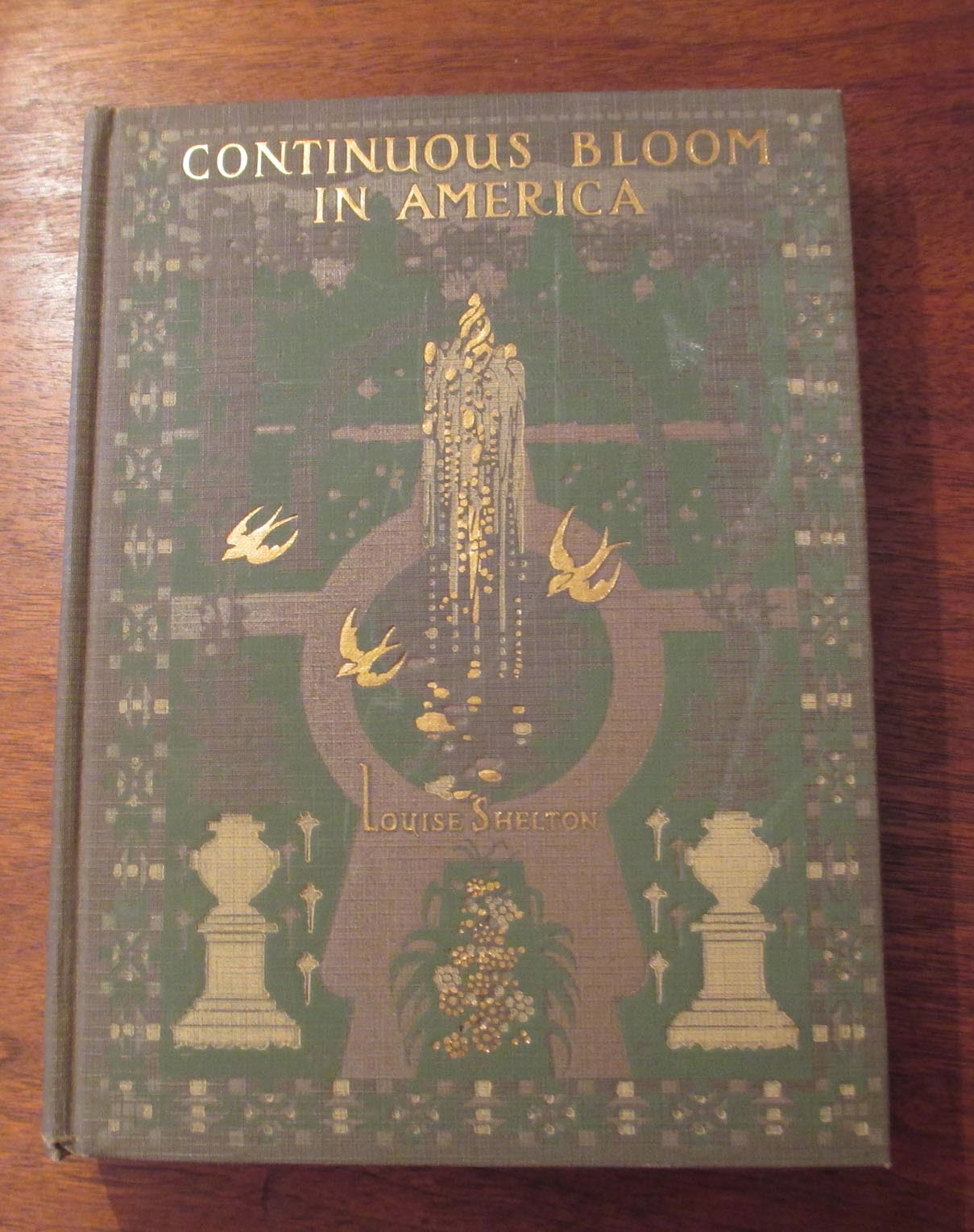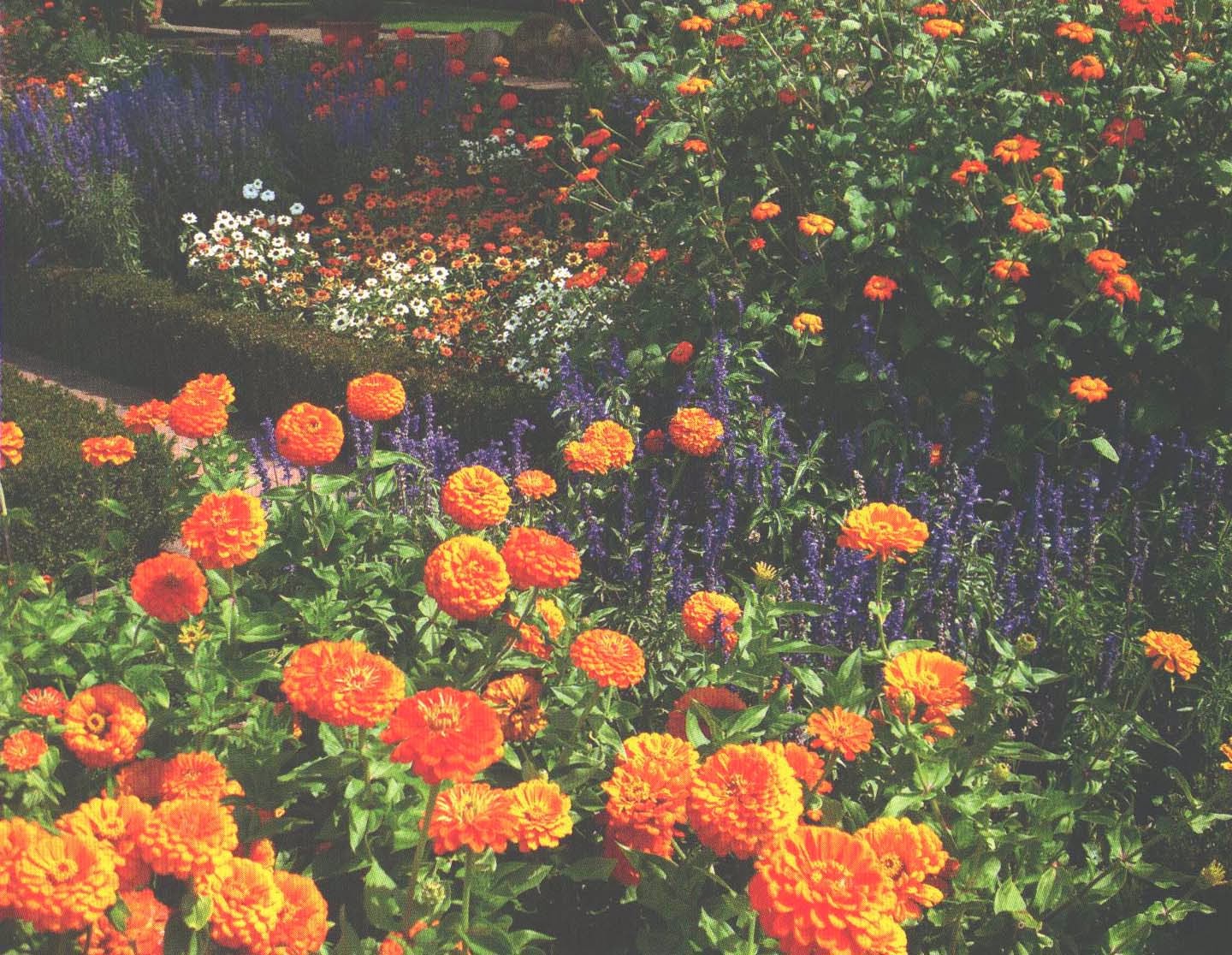Being American, until last year I had little idea what the Chelsea Flower Show even was, other than a presumably desirable event included in garden tour packages advertised in magazines like "The English Garden" and "Gardens Illustrated."
But my total ignorance has ended, due to two educational sources: 1. the BBC coverage of last year's show that I watched on YouTube last May, and 2. this book that was published right before the 2014 Show, "RHS Chelsea Flower Show: The First 100 Years: 1913-2013" by Brent Elliott (a review copy of which I requested and received from publisher Frances Lincoln because of my interest in garden history).
For those American readers who still exist in my former state of complete ignorance, the Chelsea Flower Show is a really big deal in England. Chelsea is an affluent district in central London, and every May the Royal Horticultural Society holds a five-day-long Flower Show in the grounds of the Royal Hospital Chelsea, a retirement and nursing home.
The Show in its modern format comprises three main areas:
- the huge tent known as the Floral Marquee under which plant growers and breeders exhibit amazingly impressive displays of their plants
- outside the tent are large and small Show Gardens designed by garden designers
- and a Sundries area has display greenhouses, garden tools and books, and specialist plant societies' displays
But again, I knew none of this until I read this book, which covers the history of the world's most prestigious flower show. Brent Elliot's book is filled with historic photos that I found fascinating -- I love old garden photos, and those chosen by the author and editors do a great job of showing the gardening and societal trends of each decade. (I have poorly scanned a few representative images from the book in an attempt to show how interesting the illustrations are.)
The first chapter covers the 19th century origins of the show: The Horticultural Society of London held its first flower show in 1827 in Chiswick, which proved to be too far away from London before railroads reached it and the show was eventually a financial disaster which took years to recover from. In 1861, the renamed and re-organized Royal Horticultural Society moved their flower show to a closer site in Kensington. This was successful for a few years, but London's pollution resulted in yet another move in 1888 to the garden areas of the Inner Temple (where English barristers are traditionally housed). This site lasted until 1912, when the RHS finally ended up at the current, much larger Chelsea site.
 |
| A painting showing the 1866 International Horticultural Exhibition in Kensington, a fore-runner of the Chelsea Flower Show. |
After staging a successful international horticultural exhibition on the Chelsea grounds in 1912, the first RHS flower show (called the Great Spring Show) was held there in 1913, and after the First World War, the Great Spring Show was revived in 1919. During the 1920s and 1930s, the show grew in size and the gardens and exhibits became more elaborate (rock gardens enjoyed a peak of popularity during this period and drew huge crowds, while a campaign against topiary and traditional formal gardens was waged).
 |
| A rock garden under construction for the 1935 Chelsea Flower Show. Looking on are three of the "Pensioners," residents of the retirement home at Royal Hospital Chelsea. |
And probably the most famous indoor exhibit the show has ever enjoyed was shown in 1929, when Mrs. Sherman Hoyt of California staged a tableau of Californian desert plants, which wowed the British audience with its elaborate detail and exotic plant species (Interestingly to Iowans, Mrs. Sherman Hoyt had an Iowa connection; her mother was a niece of Hoyt Sherman, a prominent 19th-century Des Moines banker, and his brother, Civil War General William Tecumseh Sherman.)
The Chelsea Flower Show was discontinued after Britain declared war in 1939, when the RHS put its efforts into its Dig for Victory campaign. The Flower Show was not able to resume until 1947, and even then with a reduced number of exhibitors, but by the early 1950s, the RHS was able to afford a larger tent as interest and attendance increased. In the 1950s and '60s, the once-popular rock gardens began their decline and many of the new gardens featured historic garden styles inspired by Spanish courtyards and French potagers.
 |
| A Spanish-style garden by the Sociedad de Amigos del Paisaje y Jardines for the 1952 show. |
The 1950s also saw the beginning of modernistic garden styles epitomized by the 1959 The Times' Garden of To-morrow, which featured labor-saving shrubs, groundcovers and paving, as well as a futuristic radio-controlled lawnmower. Also demonstrated were developments in the use of plastic containers and stainless steel garden tools, which were indeed truly revolutionary developments that modern gardeners take for granted.
 |
| A labor-saving tree and shrub garden designed by Paul Temple for the 1964 show. |
By the 1960s and 1970s, earlier amateur exhibitors were being replaced by professional growers and large garden centers, as gardeners were becoming accustomed to buying container-grown plants (made possible by plastic pots), rather than growing from specialists' seeds. Bonsai was on the ascendance in popularity, and garden designers, who had previously not been listed with garden sponsors in entries, were becoming celebrities in their own right.
 |
| Professionals preparing the impressive floral displays for a 1960s-era show inside the Great Marquee (tent). |
In the 1980s and 1990s, the Show was forced to deal with overcrowding as attendance rose to new heights. And the 1990s were marked by controversy over garden styles: in earlier years, it had been the garden modernists who complained that traditional styles were boring and irrelevant, but by the turn of the century it was the general public who lamented that many awards were being given to designs that hardly appeared to be real "gardens" (designed arrangements of live plants), but more like natural, uncultivated settings or areas of mostly paved hardscaping.
By the turn of the 21st century, many of the garden designs for the show were centered on demonstrations of sustainability, social conscience or trendy causes. Many are based on "extravagant metaphors which only become intelligible after reading the programme note," according to the author of the book, such as gardens that have attempted to represent the blood circulatory system or shock waves. Gardens now mostly seem to be fairly modernistic in design, although cottage gardens and other revivalism of historic garden styles are also represented.
 |
| This 1996 Paradise Garden by Bunny Guinness is more my style, and some of the prettier modern styles filled with lush plantings are beautiful to see. |
At any rate, "RHS Chelsea Flower Show, The First 100 Years: 1913-2013" takes readers on a fascinating tour through history -- not just through the history of the Chelsea Flower Show, but also through changes in popular garden styles as well as through the greater cultural history of England in the twentieth century.
Anyone interested in garden history, English gardens or modern British history should be familiar with this cultural icon of the English garden world, and Brent Elliott's book is just the introduction needed by American gardeners. The photos alone are endlessly enjoyable, and Elliot's narration of the story of the Chelsea Flower Show provides just enough background for the photos, but not so much as to prove dull to general readers. Highly recommended for readers who want to know more about the biggest flower show on earth.
And even if you're not interested in the book, many gardeners will enjoy watching a few episodes of the coverage of the Chelsea Flower Show 2016, which can likely be found on Youtube or on BBCi (although the BBC blocks foreign viewers, so an inexpensive DNS proxy service such as UnoTelly, which prevents streaming services from knowing where your computer is located, is necessary for viewers outside the UK).
Here's to the Greatest Flower Show on Earth -- and thanks for reading! -Beth


















































